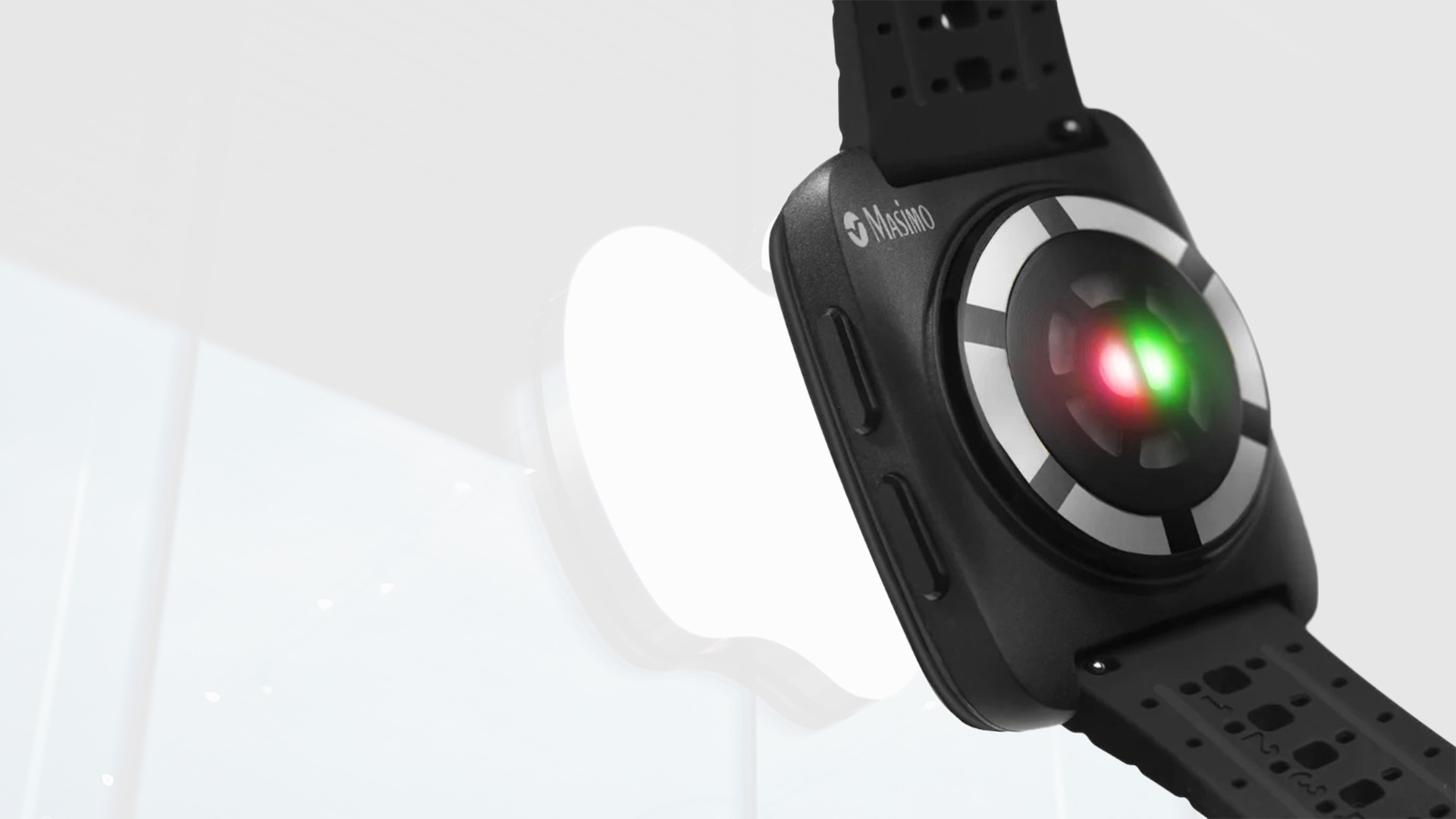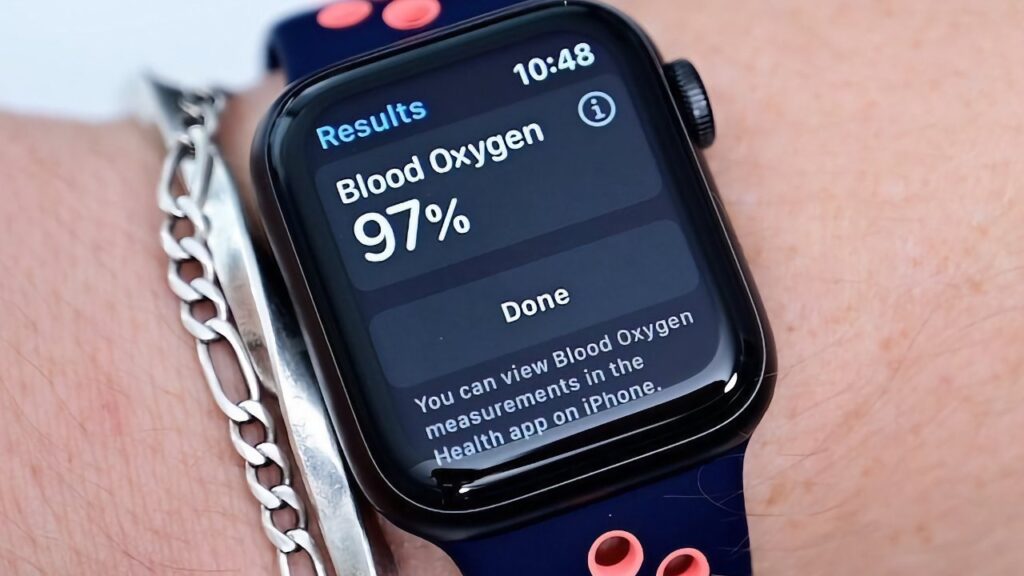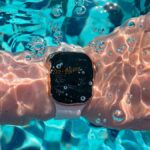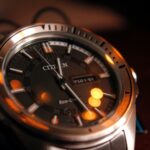The saga surrounding Apple’s legal battle with Masimo, a medical technology company, has culminated in a significant event: a temporary ban on the sale of certain Apple Watch models in the United States. This ban, triggered by a patent dispute over blood oxygen sensing technology, has sent ripples through the tech industry and raised critical questions about innovation, intellectual property, and consumer access to health monitoring features. The story is far more complex than a simple case of patent infringement. It involves accusations of poaching employees, concerns about trade secrets, and a deep-seated rivalry between two companies vying for dominance in the burgeoning market of wearable health technology.
The implications of this ban extend beyond Apple and Masimo. It touches upon the broader landscape of medical device innovation and the importance of protecting intellectual property rights. The outcome of this dispute could potentially reshape how tech companies approach the integration of medical technologies into consumer devices. It also highlights the increasing scrutiny placed on the accuracy and reliability of health data collected by wearable devices, particularly as consumers rely on this data for personal health management.

Understanding the intricacies of this case requires delving into the history of the dispute, the specific patents at the heart of the legal battle, and the potential impact on both companies and consumers. This is not just a legal squabble; it’s a clash of titans in the health tech arena, with far-reaching consequences for the future of wearable technology and its role in healthcare. The temporary ban serves as a stark reminder of the importance of respecting intellectual property and the potential ramifications of failing to do so.
This article will explore the key aspects of the Apple-Masimo conflict, providing a comprehensive overview of the events leading up to the ban, the legal arguments presented by both sides, and the potential long-term effects on the wearable technology market. We will analyze the specific technologies in dispute, examine the evidence presented in court, and discuss the implications for consumers who rely on Apple Watches for health monitoring. Furthermore, we will explore the broader context of intellectual property protection and its role in fostering innovation in the technology sector. Ultimately, our goal is to provide a clear and unbiased understanding of this complex and evolving situation.
The Genesis of the Apple-Masimo Dispute
The conflict between Apple and Masimo didn’t erupt overnight. It’s a culmination of years of tension, fueled by accusations of poaching employees, intellectual property theft, and competitive pressure in the rapidly expanding market for wearable health technology. To understand the current ban, it’s crucial to trace the origins of this dispute and examine the key events that led to the courtroom showdown.
The Allegations of Employee Poaching and Trade Secret Misappropriation
The seeds of the dispute were sown when Apple began hiring key personnel from Masimo, a company renowned for its expertise in pulse oximetry technology. Masimo alleged that Apple actively recruited engineers and scientists with intimate knowledge of its proprietary technology, specifically related to non-invasive blood oxygen monitoring. Masimo further claimed that Apple’s intention was not simply to acquire talent but to gain access to and ultimately utilize Masimo’s trade secrets in the development of its own Apple Watch features. This initial accusation of employee poaching and potential trade secret misappropriation formed the foundation for Masimo’s legal claims.
- Masimo accused Apple of aggressively recruiting its engineers.
- The core claim was that Apple sought to steal trade secrets related to blood oxygen sensing.
- This formed the basis of Masimo’s initial legal challenges against Apple.
The Patents at the Heart of the Conflict
The legal battle between Apple and Masimo centers around several patents related to non-invasive blood oxygen monitoring technology. These patents, owned by Masimo, cover various aspects of pulse oximetry, including the algorithms, sensors, and methods used to accurately measure blood oxygen saturation levels. Masimo contends that Apple’s blood oxygen sensing feature in the Apple Watch infringes upon these patents. Apple, on the other hand, argues that its technology is distinct and does not violate Masimo’s intellectual property rights. The validity and scope of these patents have been central to the legal arguments presented by both sides.
Masimo’s patents cover various aspects of pulse oximetry, including:
- Algorithms for processing sensor data.
- Sensor designs for accurate measurement.
- Methods for reducing motion artifacts.
Apple argues that its technology is different and doesn’t infringe on Masimo’s patents. This argument is based on differences in:
- Sensor technology.
- Signal processing techniques.
- Algorithms used for calculating SpO2.
The ITC Investigation and the Import Ban
Masimo filed a complaint with the International Trade Commission (ITC), an agency that investigates allegations of unfair trade practices, including patent infringement. After a thorough investigation, the ITC ruled in favor of Masimo, finding that Apple had indeed infringed on its patents related to blood oxygen sensing technology. As a result, the ITC issued an import ban on certain Apple Watch models that incorporate the infringing technology. This ban prohibits Apple from importing and selling these models in the United States, effectively disrupting its supply chain and retail operations. The ban represents a significant victory for Masimo and a major setback for Apple.
The ITC investigation involved:
- Reviewing technical documents and expert testimony.
- Analyzing the specific technologies used by both companies.
- Determining whether Apple’s technology infringed on Masimo’s patents.
The ITC ruling led to:
- An import ban on specific Apple Watch models.
- A significant disruption to Apple’s US sales.
- Increased pressure on Apple to reach a settlement with Masimo.
The Apple Watch Models Affected by the Ban
The import ban specifically targets Apple Watch models that include the blood oxygen sensing feature and are found to infringe upon Masimo’s patents. This includes the Series 9 and Ultra 2 models. Older Apple Watch models that do not incorporate the disputed technology are not subject to the ban. The ban has forced Apple to temporarily halt sales of these models in the US, both online and in retail stores. While Apple has attempted to circumvent the ban through software updates, the legal battle continues, and the long-term impact remains uncertain.
The affected models are:
- Apple Watch Series 9
- Apple Watch Ultra 2
Older models not affected:
- Apple Watch SE
- Older Series models without blood oxygen sensing
The Legal Arguments and Counterarguments
The legal battle between Apple and Masimo is a complex affair involving intricate patent law, technical expertise, and competing interpretations of the evidence. Understanding the core arguments presented by both sides is crucial to grasping the nuances of the dispute and the rationale behind the ITC’s decision. Each company has presented a detailed case, attempting to either prove or disprove patent infringement.
Masimo’s Case: Patent Infringement and Damages
Masimo’s primary argument is that Apple’s blood oxygen sensing technology in the Apple Watch directly infringes upon its patents. They presented evidence, including expert testimony and technical analysis, to demonstrate that Apple’s technology incorporates key elements covered by Masimo’s patents. Masimo also sought significant damages from Apple, arguing that the company’s infringement has caused substantial financial harm by eroding Masimo’s market share and undermining its competitive position. Masimo’s legal team meticulously built a case based on the technical specifications of both companies’ technologies and the legal precedent surrounding patent law.
Masimo’s case rested on the following pillars:
- Demonstrating direct infringement of its patents.
- Providing expert testimony to support its claims.
- Quantifying the financial damages caused by Apple’s actions.
Expert testimony played a critical role in explaining complex technical concepts to the court and demonstrating the similarities between Apple’s and Masimo’s technologies.
Apple’s Defense: Non-Infringement and Patent Invalidity
Apple, in its defense, argued that its blood oxygen sensing technology is distinct from Masimo’s and does not infringe upon its patents. Apple presented evidence to demonstrate that its technology utilizes different sensor designs, signal processing techniques, and algorithms for calculating blood oxygen saturation. Apple also challenged the validity of Masimo’s patents, arguing that they are either too broad or cover existing technology. Apple’s legal team attempted to dismantle Masimo’s case by highlighting the differences between the two companies’ technologies and questioning the legitimacy of Masimo’s intellectual property claims.
Apple’s defense strategy included:
- Arguing that its technology is fundamentally different.
- Challenging the validity of Masimo’s patents.
- Presenting its own expert testimony to counter Masimo’s claims.
Apple’s lawyers focused on highlighting the differences in the underlying technology and arguing that Masimo’s patents were overly broad and should not be enforced.
The ITC’s Ruling and its Justification
The ITC ultimately sided with Masimo, finding that Apple had indeed infringed upon its patents. The ITC’s decision was based on a thorough review of the evidence presented by both sides, including expert testimony, technical analysis, and patent documentation. The ITC concluded that Apple’s blood oxygen sensing technology incorporates key elements covered by Masimo’s patents, and that Apple had failed to demonstrate that Masimo’s patents were invalid. The ITC’s ruling was a significant victory for Masimo and a major blow to Apple, leading to the import ban on certain Apple Watch models.
The ITC’s decision was based on:
- A comprehensive review of all evidence presented.
- A determination that Apple’s technology infringed on Masimo’s patents.
- A rejection of Apple’s arguments regarding patent invalidity.
The ITC’s ruling was a strong affirmation of Masimo’s intellectual property rights and a significant setback for Apple.
The Potential for Appeal and Further Litigation
Despite the ITC’s ruling, the legal battle between Apple and Masimo is far from over. Apple has the option to appeal the ITC’s decision to the US Court of Appeals for the Federal Circuit, which specializes in patent law. Apple could also pursue other legal avenues, such as seeking a settlement with Masimo or redesigning its Apple Watch technology to avoid infringing upon Masimo’s patents. The future of the dispute remains uncertain, and further litigation is likely as both companies continue to fight for their respective interests. The outcome of this legal saga will have significant implications for the wearable technology market and the protection of intellectual property rights.
Apple’s options include:
- Appealing the ITC’s decision to the Federal Circuit.
- Seeking a settlement agreement with Masimo.
- Redesigning its technology to avoid infringement.
The long-term impact of this legal battle remains uncertain, and further developments are expected in the coming months.
The Impact on Consumers and the Wearable Technology Market
The Apple-Masimo dispute and the resulting import ban have significant implications for consumers and the broader wearable technology market. The availability of certain Apple Watch models is affected, potentially impacting consumer choice and access to health monitoring features. The dispute also raises questions about the accuracy and reliability of health data collected by wearable devices and the role of intellectual property in fostering innovation in the technology sector.
The Availability of Apple Watches and Consumer Choice
The import ban on certain Apple Watch models has directly impacted the availability of these devices to consumers in the United States. With sales temporarily halted, consumers who were planning to purchase the Series 9 or Ultra 2 models are faced with limited options. They may need to consider alternative wearable devices, wait for Apple to resolve the legal dispute, or purchase older models that do not incorporate the disputed technology. The ban has effectively reduced consumer choice and disrupted the market for Apple Watches.
Consumers are affected by:
- Limited availability of Series 9 and Ultra 2 models.
- Potential delays in purchasing desired devices.
- The need to consider alternative wearable options.
The ban has created uncertainty and frustration among consumers who were looking forward to purchasing the latest Apple Watch models.
The Accuracy and Reliability of Health Data
The Apple-Masimo dispute has also raised questions about the accuracy and reliability of health data collected by wearable devices. While the blood oxygen sensing feature in the Apple Watch is not intended to be a substitute for medical-grade equipment, many consumers rely on it for personal health monitoring. The legal battle has highlighted the importance of ensuring that these features are accurate and reliable, and that companies are transparent about their limitations. The dispute has also prompted a broader discussion about the regulation of health-related features in wearable devices.
The dispute highlights the need for:
- Ensuring the accuracy and reliability of health data.
- Transparency about the limitations of wearable devices.
- Consideration of regulatory oversight for health-related features.
Consumers need to be aware that wearable devices are not medical devices and should not be used to diagnose or treat medical conditions.
The Broader Implications for the Wearable Technology Market
The Apple-Masimo dispute has broader implications for the wearable technology market as a whole. The legal battle has underscored the importance of protecting intellectual property rights and the potential consequences of patent infringement. The dispute could also influence how tech companies approach the integration of medical technologies into consumer devices, potentially leading to more rigorous due diligence and licensing agreements. The outcome of this legal saga could reshape the competitive landscape of the wearable technology market and impact the pace of innovation in the sector.
The dispute could lead to:
- Increased scrutiny of intellectual property rights in the wearable market.
- More cautious approaches to integrating medical technologies.
- Potential shifts in the competitive landscape.
The case serves as a cautionary tale for companies operating in the rapidly evolving wearable technology market.
The Future of Health Monitoring in Wearable Devices
Despite the current dispute, the future of health monitoring in wearable devices remains bright. Wearable devices have the potential to play an increasingly important role in personal health management, providing consumers with valuable insights into their health and wellness. As technology continues to advance, wearable devices are likely to become even more sophisticated and accurate, offering a wider range of health monitoring features. However, it is crucial that these features are developed and implemented responsibly, with a focus on accuracy, reliability, and data privacy. The Apple-Masimo dispute serves as a reminder of the challenges and complexities involved in bringing innovative health technologies to market.
The future of health monitoring in wearables includes:
- Continued innovation in sensor technology and algorithms.
- Expansion of health monitoring features.
- Increased focus on data privacy and security.
Wearable devices have the potential to revolutionize personal health management, but it is essential to address the challenges and ensure responsible development.
Summary and Recap
The Apple-Masimo dispute, culminating in a temporary ban on certain Apple Watch models, is a complex saga with far-reaching implications. At its core, the conflict revolves around allegations of patent infringement related to blood oxygen sensing technology. Masimo, a medical technology company, accused Apple of poaching employees and misappropriating trade secrets, ultimately leading to a legal battle that resulted in the ITC ruling in favor of Masimo. This ruling triggered an import ban on the Apple Watch Series 9 and Ultra 2 models, disrupting Apple’s sales and supply chain in the United States.
The legal arguments presented by both sides were intricate and technical. Masimo argued that Apple’s technology directly infringed upon its patents, while Apple countered that its technology was distinct and that Masimo’s patents were invalid. The ITC sided with Masimo, finding that Apple had indeed infringed on its patents. This decision was based on a thorough review of the evidence and expert testimony presented by both sides. Apple has the option to appeal the ITC’s ruling, but the legal battle is likely to continue for some time.
The impact of the dispute extends beyond Apple and Masimo. Consumers have been affected by the limited availability of certain Apple Watch models, potentially impacting their access to health monitoring features. The dispute has also raised questions about the accuracy and reliability of health data collected by wearable devices and the importance of protecting intellectual property rights. The outcome of this legal saga could reshape the wearable technology market and influence how tech companies approach the integration of medical technologies into consumer devices.
Key takeaways from the Apple-Masimo dispute include:
- The importance of respecting intellectual property rights.
- The potential consequences of patent infringement.
- The need for accuracy and reliability in health monitoring features.
- The broader implications for the wearable technology market.
The future of health monitoring in wearable devices remains promising, but it is crucial to address the challenges and complexities involved in bringing innovative health technologies to market. The Apple-Masimo dispute serves as a reminder of the importance of responsible development, rigorous due diligence, and respect for intellectual property.
Frequently Asked Questions (FAQs)
Why were Apple Watches banned?
Certain Apple Watch models (Series 9 and Ultra 2) were temporarily banned in the United States due to a patent dispute with Masimo, a medical technology company. The ITC ruled that Apple’s blood oxygen sensing technology infringed on Masimo’s patents, leading to an import ban on these specific models.
What patents are involved in the dispute?
The dispute centers around several patents owned by Masimo that cover various aspects of non-invasive blood oxygen monitoring technology. These patents include algorithms, sensor designs, and methods used to accurately measure blood oxygen saturation levels. Masimo claims that Apple’s blood oxygen sensing feature in the Apple Watch infringes upon these patents.
Which Apple Watch models are affected by the ban?
The import ban specifically affects the Apple Watch Series 9 and Apple Watch Ultra 2 models, as these are the models that incorporate the blood oxygen sensing technology found to infringe upon Masimo’s patents. Older Apple Watch models without this feature are not subject to the ban.
Can Apple appeal the ITC’s decision?
Yes, Apple has the option to appeal the ITC’s decision to the US Court of Appeals for the Federal Circuit, which specializes in patent law. This would allow Apple to challenge the ITC’s ruling and potentially overturn the import ban. Apple could also pursue other legal avenues, such as seeking a settlement with Masimo.
What does this mean for consumers?
The ban means that the Apple Watch Series 9 and Ultra 2 models are temporarily unavailable for purchase in the United States. Consumers who were planning to buy these models may need to consider alternative wearable devices, wait for Apple to resolve the legal dispute, or purchase older models that do not incorporate the disputed technology. The situation has created uncertainty and frustration for many consumers.



